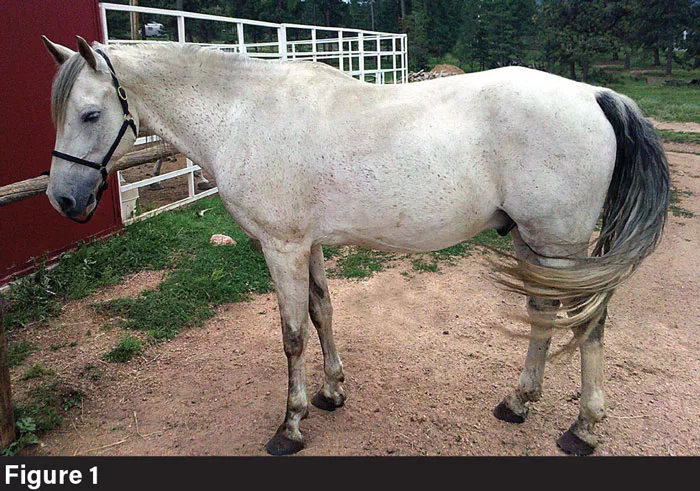American Farriers Journal
American Farriers Journal is the “hands-on” magazine for professional farriers, equine veterinarians and horse care product and service buyers.

A 15-year-old Missouri Foxtrotter gelding. Photo by: Philip Mell
This is the third in a series on straightness and its effects on the hoof.
Read "How Straightness Affects the Equine Hoof" and "How Leaning Affects Equine Anatomy"
Whereas structurally asymmetrical horses are rare, horses that are in the habit of leaning and traveling crookedly are nearly universal in the domestic horse population. In this article, my purpose is to demonstrate crooked carriage in a variety of different riding and training contexts and various horse breeds.
Knowing the signs in both horse and rider that they are not in the habit of moving straight is certainly relevant to the farrier’s ability to give great service. I begin by asking you to consider the horse in Figure 1. It’s a useful image because the animal is loosely tied to a rack; nobody is trying to pose him in any fancy way, nobody is pulling on his head, nothing is causing him to tense up, and the only irritant present is enough flies to make him want to swish his tail. The owner took the photo and sent it to me saying that it’s a 15-year-old Missouri Foxtrotter gelding. He enjoys riding this horse but reports that he “has no left lead” and asks for advice on how to fix this.
It’s always good to begin by assessing structure. I see little to complain about in context of the horse’s use, which is mainly trail riding. He’s a little upright through the knees,1 but the joints…